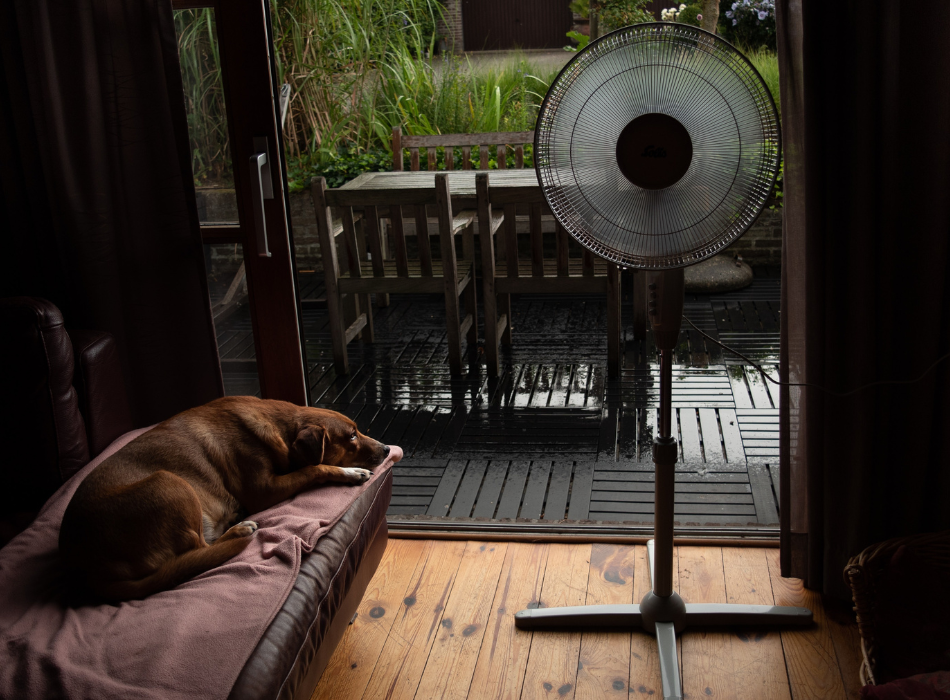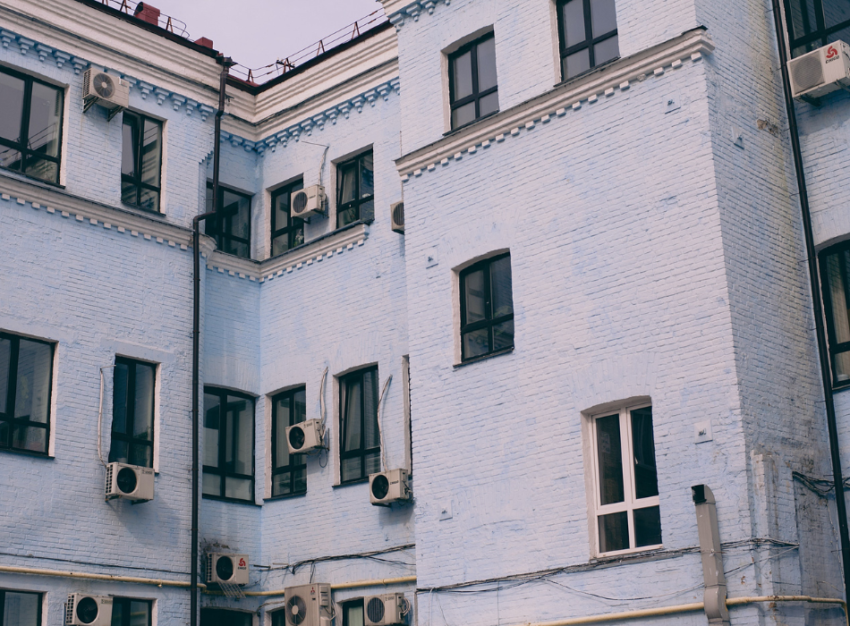I’ve always had mixed feelings about the summer. On the one hand, there are vacations, camping and ice cream. On the other hand, you have to deal with sunscreen, mosquitoes and the heat.
In Ottawa, where I grew up, it can get very hot and humid during the summer. Thankfully, my parents would blast the air conditioning all summer, which made it seem less bad.
However, not everyone has access to an air conditioner or wants to use one. Apartments may not come equipped with AC, and air conditioners—and their associated electricity costs—are often unaffordable for those on a low income. Air conditioners are also less common in some regions because temperatures are normally moderate enough to make the appliance unnecessary.
Yet we know that temperatures across Canada are rising and that extreme heat negatively impacts our health. The average annual temperature in Canada increased by 1.7°C from 1948 to 2016, which is about double the average global rate of warming. The consequences of extreme heat can be deadly, as in the 2021 heat dome in British Columbia. As temperatures get hotter, it will be increasingly important to find ways to stay cool, and air conditioners seem like an obvious solution.
What are the environmental impacts of air conditioners?
First things first: what impact do air conditioners have on our planet? Air conditioners use a lot of electricity. Globally, air conditioners (along with electric fans) consume 10% of electricity. Air conditioning units are inefficient at using energy, particularly on extremely hot days. That’s also when the largest number of people use their AC, which puts pressure on the electricity grid and can cause blackouts.
Standard air conditioners rely on chemicals called refrigerants, which can leak out of the appliance when it’s running and during disposal. Today, most air conditioners use refrigerants called hydrofluorocarbons (HFCs), which replace ozone-depleting chlorofluorocarbons (CFCs). However, HFCs bring their own problems: these short-lived greenhouse gases can be hundreds to thousands of times more potent than carbon dioxide—only exacerbating climate change.
There’s some hope: more than 140 countries have ratified an agreement to phase out the majority of HFCs by 2050, and companies are working on designing climate-friendly air conditioners. However, it could be some time until these solutions are accessible and affordable for all. In the meantime, how can you stay cool without using an air conditioner (or even with reduced use of an AC)?
Close the blinds or curtains
Closing the blinds during the daytime blocks the sun’s rays from heating your home. This strategy is particularly effective if you have thick blackout curtains. If you still want to let in some natural light, leave the blinds or curtains open a crack.
Use a fan

Fans lower the perceived temperature of a room—as long as temperatures are below the mid-30s Celsius. Fans are more economical than air conditioners and use significantly less electricity.
Place a fan in the corner of the room or near your bed or desk to get a breeze going. Try placing a bowl of ice in front of the fan: the fan will blow cold air toward you.
If you have a box fan (one of those big fans with a grill in front), place it in your bedroom window. Run the device when it’s colder outside than inside. The fan will move hot air outside and cool air inside.
Open windows strategically
Before I go to bed during the summer, I open my bedroom window—as long as the air outside isn’t too hot. At night, when temperatures drop, open the windows to let in cooler air. If possible, open multiple windows to allow the air to circulate between rooms.
Make sure to keep windows closed during the day to keep hot air out.
Dress appropriately for the heat
Whether you’re braving the outdoors or hiding inside, dress in light clothing to reduce your body temperature. Light, breathable fabrics like cotton help your body stay cooler. Light-coloured clothing, meanwhile, reflects the sunlight.
Wearing fewer layers also helps you stay cool by trapping less heat in your body. Having more exposed skin leaves a larger surface area for sweat to transfer heat off your body. Remember to wear sunscreen, though!
If, like me, you have long, thick hair, wear your hair up to limit that yucky back-of-the-neck sweat.
Use a damp cloth or ice pack
If you need an instant cool down, place a damp cloth or ice pack on your wrists or neck. In these parts of the body, the blood vessels are close to the skin, so you’ll cool down more quickly. You can also wear a damp scarf around the back of your neck to help stay cool.
If you’re feeling up for it, take a cold bath or shower to reduce your body’s core temperature all at once.
Stay hydrated

On a hot day, many of us reach for a cool drink. A cold beverage doesn’t only make you feel cooler—it also replaces fluids that have been lost in sweat. On a hot day, your body sweats more. Drinking lots of water throughout the day prevents dehydration and ensures your body has the water it needs to function.
If you’ve been doing exercise or working outside, also drink sports drinks like Gatorade to replace the electrolytes that you’ve lost.
Rework your schedule and activities
Where possible, only go outside at times of day when it’s cooler, like early in the morning and after dinner. Don’t be like me and go for walks during the afternoon when temperatures are hottest! If your work schedule allows, rest during the hottest part of the day. Being active at these times heats up your body.
Major appliances like the oven and washing machine generate heat. Try to do energy-intensive tasks like cooking, baking and laundry at cooler times of day. To avoid heating up your living space, consider eating cold meals like salad instead of, for example, cooking a casserole. When it’s hot out, you may feel more like eating cold, light meals, anyways!
Find cool(er) spaces
Remember that hot air rises. If you have the option, hang out in lower floors of your building or even the basement. If nothing else, move your mattress to the floor to enjoy a slightly cooler night’s sleep.
When you’re outside, try to stick to shaded areas. If you need to get out of the heat, public buildings like libraries and community centres often have air conditioning. If worse comes to worst, many cities run cooling centres for relief during extreme heat. Though these centres do use air conditioning, they’re a resource that’s available for everyone.
How to stay cool without using an air conditioner
As global temperatures rise, it’s imperative to find ways to stay cool. Yet air conditioners are inaccessible for many people and contribute to climate change. Thankfully, there are alternative ways to stay cool and make summers more bearable.
I want to know: How do you stay cool in the summer without using an air conditioner?
Categories and tags:
Share this post:


Small correction: hot air rises; heat, a form of radiation, radiates from its source. You’re doing a great job here, Eleanor, I heartily approve!
Thank you for pointing that out! I’ve corrected the post.